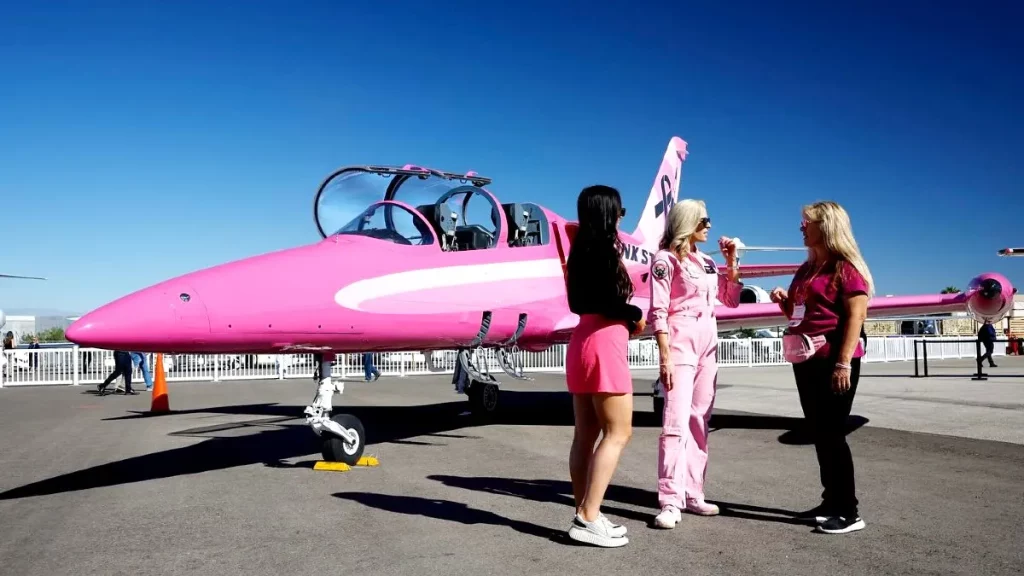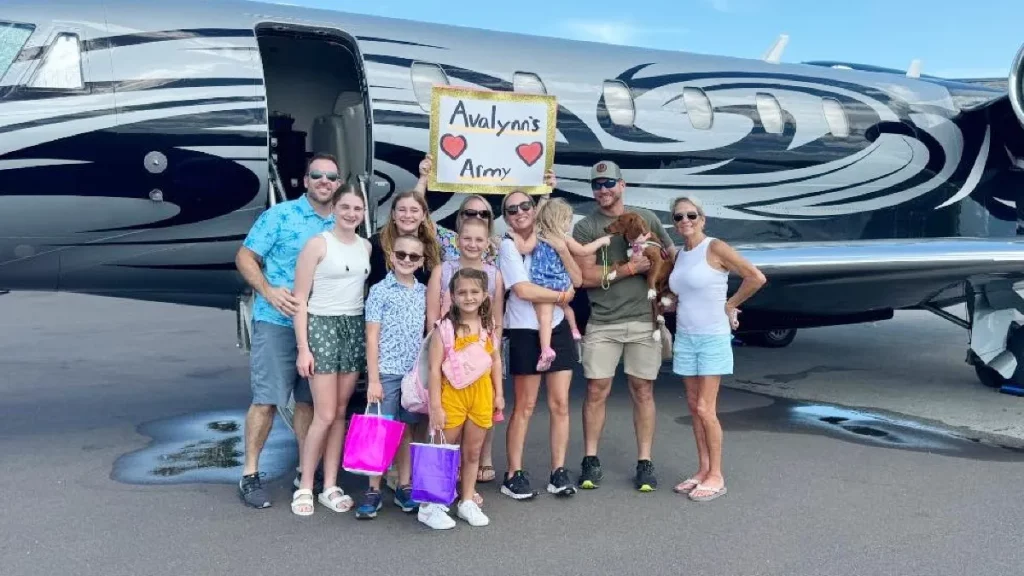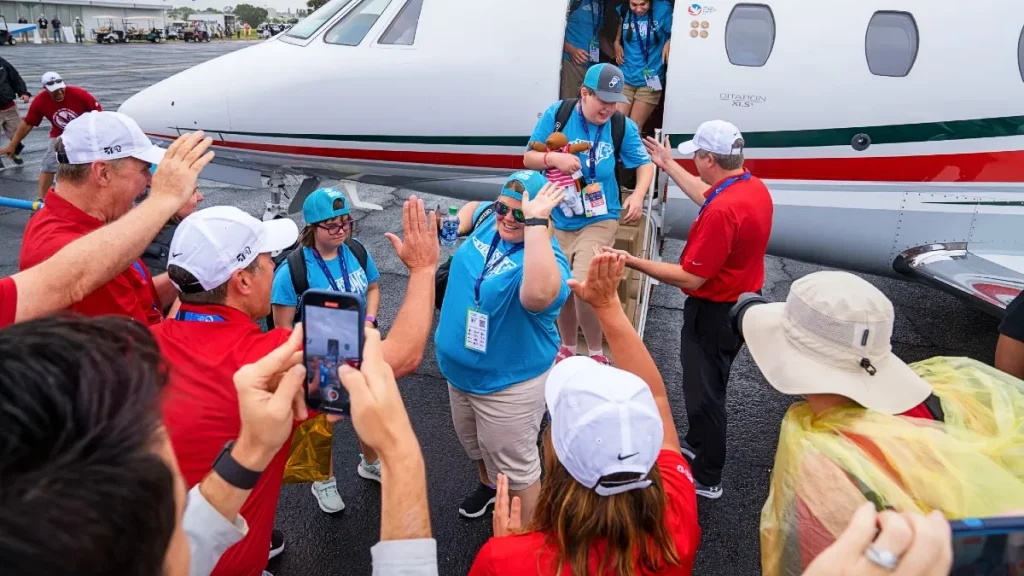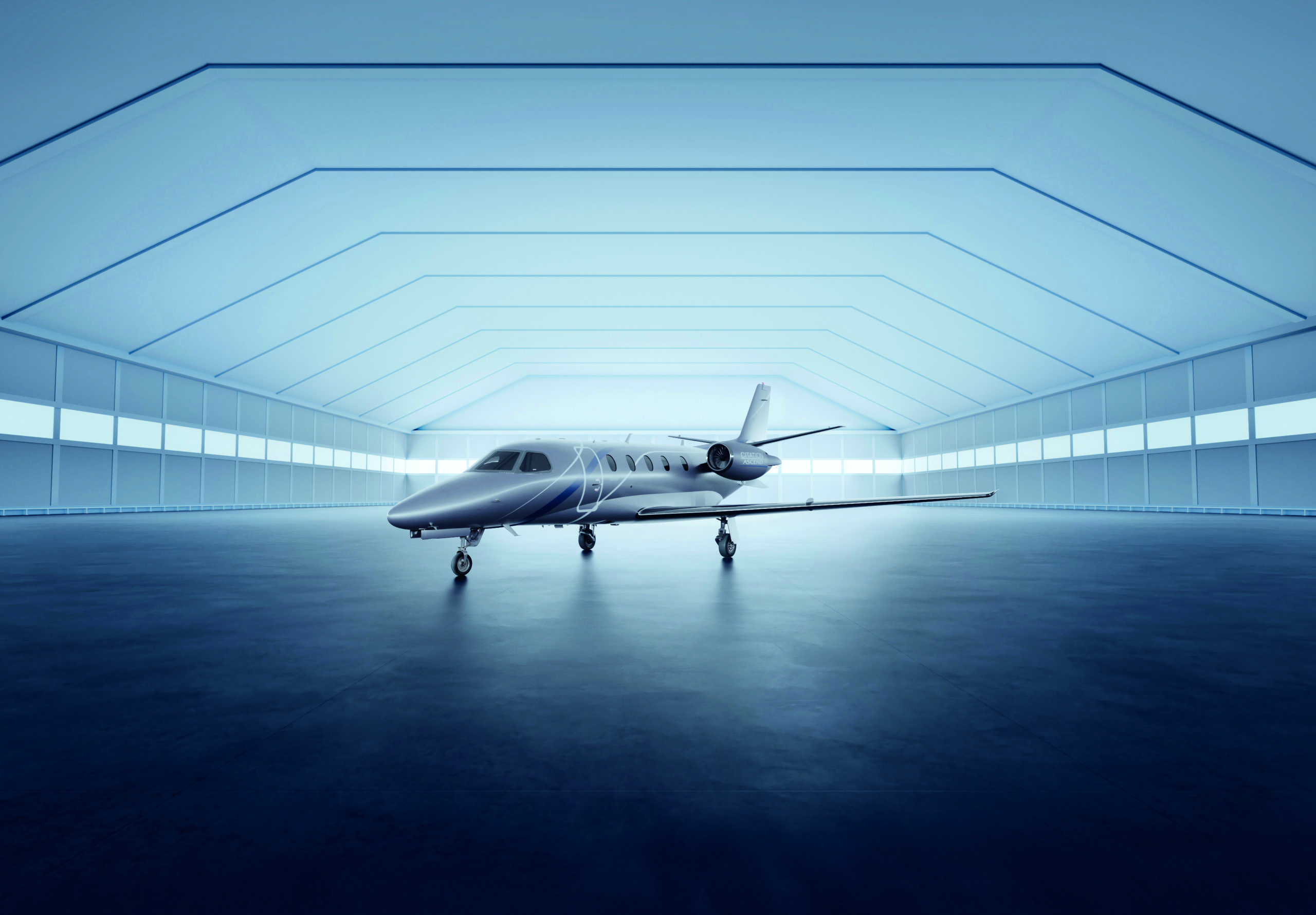The use cases range from promoting breast cancer awareness to transporting chronically ill children to hospitals.
A sleek Citation Longitude. An elegant Embraer Phenom 300. A sexy Falcon 7X. These corporate tools typically fly in pursuit of the bottom line or high-end travel. More and more, these jets also serve a wide range of philanthropic missions—to benefit those who also need fast, secure, and direct transportation, from children fighting cancer and other life-threatening illnesses to Special Olympic athletes.
These nonprofits have developed in different ways. The Special Olympics Airlift was the idea of former Cessna CEO Russ Meyer to transport athletes from all over the U.S. to the games. Mark Pestal, a pilot and attorney, started AeroAngel using his own aircraft to transport chronically ill children to specialist hospitals. Stephanie Goetz flies a pink fighter jet to increase breast-cancer awareness—appropriate during Breast Cancer Awareness month—among teenage girls.
Business jets often look like exclusive tools for executives and the ultra-wealthy. But they are also used for doing good. You never know what precious cargo—or compelling message—it carries inside.
The Pink Jet

Like a blazing ribbon in the sky, the Aero Vodochody L-39 Albatros not only trains military pilots around the world, but it also delivers the fast, fighter-style jet experience to the civilian pilots who get to fly it. Among them are Reno air-race pilot Vicky Benzing and corporate jet pro Stephanie Goetz. Together, they are using a very special L-39 to draw attention to an ongoing cause critical to saving lives—breast-cancer awareness.
With a focus on early detection, the Pink Jet project launched in 2023 with a mission to transform an L-39 into a flying billboard, to attend airshows, and present to a wide range of groups how important it is to screen for deadly cancers.
Aerial Angels is the nonprofit operating the jet, started by Steve and Jamie Oakley, who purchased the Czech-built L-39 and, according to Goetz, set out to do something more than just fly it around. They wanted to empower, to inspire, so they transformed it from a military trainer into a stunning platform for outreach. While adult women may understand clearly the need for self-examination and regular mammograms, the Pink Jet’s striking hot magenta-and-bubblegum paint scheme connects with an equally important segment—girls in their elementary and preteen years.
Goetz discovered this while parading the jet at the EAA AirVenture airshow in Oshkosh, Wis., last July. “It’s especially eye-catching and inspiring to young girls,” she told Robb Report at the show. “They’ll run run across the ramp and go ‘I want to see the pink plane!’ And they’re not doing that with any other airplane on the ramp.”
The lesson might even extend even farther to some of these young women’s life choices. “It proves that you can be fabulous and fierce at the same time,” says Goetz, noting a number have told her that they want to learn to fly. “You can also be competent, strong, and a very skilled pilot.”
Corporate Angel Network

Identifying another critical need led to the formation of an organization focused on medical transportation. Launched in the early 1980s to provide lift to cancer patients seeking treatment around the U.S., the Corporate Angel Network continues this mission. Using the empty seats often available on corporate aircraft, CAN connects the flight departments of Fortune 500 companies and others with those who need immediate help.
Founded by pilot and cancer survivor Priscilla “Pat” Blum, with businessman Jay Weinberg and pilot Leonard Green, CAN flew its first mission in December 1981 to take a cancer patient from treatment in New York back home to Detroit. Since February, CAN has been led by executive director Robert Stangarone, who sums up the mission succinctly: “It’ all about saving lives and reducing the stress—physical, financial, and emotional—associated with traveling for cancer treatment.”
Several hundred corporations in the U.S. have lent empty seats to the cause—with more than 68,000 total flights that CAN has coordinated since its inception. The group continued to secure flights even during Covid lockdowns, though corporate travel was greatly reduced. Post-pandemic, CAN provides about 2,000 flights each year. Still, Stangarone would love to offer more—and get the message out to hospitals in order to connect with patients who need CAN’s services.
Here’s how it works: When a patient applies for transport, CAN looks for a match in its database to see if there is a scheduled flight within 100 miles of the departure and destination airports. CAN’s operations center serves as the intermediary between the flight department and the patient to secure the arrangements. A commercial flight is always booked as a backup—though with the often-compromised immune systems of many cancer patients, the private flight is much preferred.
CAN uses pressurized, turbine aircraft with two-pilot crews, and it recently expanded its roster to include turboprops like the Pilatus PC-12 and Beechcraft King Air. “It’s very rewarding for the pilots—and executives who fly with them,” said Stangarone.
AeroAngel

Another philanthropic organization supporting those who need a private—and fast—means of lift is AeroAngel. Based in Centennial, Colorado, and founded in January 2010 by pilot and attorney Mark Pestal, AeroAngel focuses on providing critically ill children with the way to get to life-saving medical care they would not otherwise be able to obtain.
Pestal put his own aircraft and piloting skills to the mission initially, and now AeroAngel utilizes donated time in a wide range of light to midsize jets. In fact, in 2018, the nonprofit accepted a donated Learjet 35—complete with a crew—which enabled the organization to move patients on direct flights from Denver to either coast.
The organization keeps growing—so much that Pestal left his day job five years ago to volunteer full time. “We did over $1.6 million in public benefit flights last year,” said Pestal. “We’re coming a long way—we could easily spend a million dollars on charter flights a year.” With roughly 250 flight donors and 500 aircraft on its list, AeroAngel provides nationwide coverage—but would like to raise its profile to include more flights to Canada, for example.
A recent mission exemplifies the care taken by AeroAngel to serve its young charges and the families surrounding them. “We had one flight for a little 4-year-old dealing with relapsed leukemia—a rare form—who needed just to go from Pittsburgh Children’s Hospital to Philadelphia Children’s Hospital for a clinical trial. This was the last treatment option, but the little guy’s too-immune-compromised and medically fragile to drive, and there are not even good [commercial] flights. It’s an incredible service.”
Special Olympics Airlift

A casual conversation over a backyard fence in Wichita, Kansas, seems an unlikely origin for one of the largest ongoing philanthropic flight missions. But it’s exactly where Russ Meyer Jr., then-Cessna president and CEO, traded ideas with a neighbor who was a board member for the Special Olympics back in 1986. Meyer envisioned the marriage of Cessna’s Citation jet with the need to move teams of athletes from each state to the Special Olympics games—and he knew that Citation owners would jump at the chance to help out. This led to the first “Citation Airlift,” which took place in 1987, when Cessna jets flew the Kansas delegation to the International Winter Games in Salt Lake City, Utah.
The company has now expanded to include all of the business transport aircraft built by Textron Aviation; the latest Airlift in June 2022 brought athletes from around the U.S. to Orlando, Florida, for the summer games. Corporate flight departments and private owners and pilots volunteer their time, aircraft, and expenses to the mission, which has transported more than 10,000 athletes overall.
Many athletes aren’t able to travel very easily on the airlines. That makes the point-to-point nature of business aviation and its inherent ability to keep tightly knit groups (including coaches and support people) together all the more important to ensuring the athletes arrive ready to compete.
Textron supports the Airlift by covering the logistics of moving anywhere from 150 to 260 jets and its volunteer crews in one large push into the host airport—and back out a week later. “The Special Olympics Airlift has exemplified the spirit of unity and generosity within the business aviation community for decades,” said Stephanie Harder, vice president, communications and public affairs for Textron Aviation. “The signature event has provided a unique opportunity for everyone involved to ignite a shared passion for uplifting others and enhancing our communities by offering athletes a once-in-a-lifetime aviation experience.”








